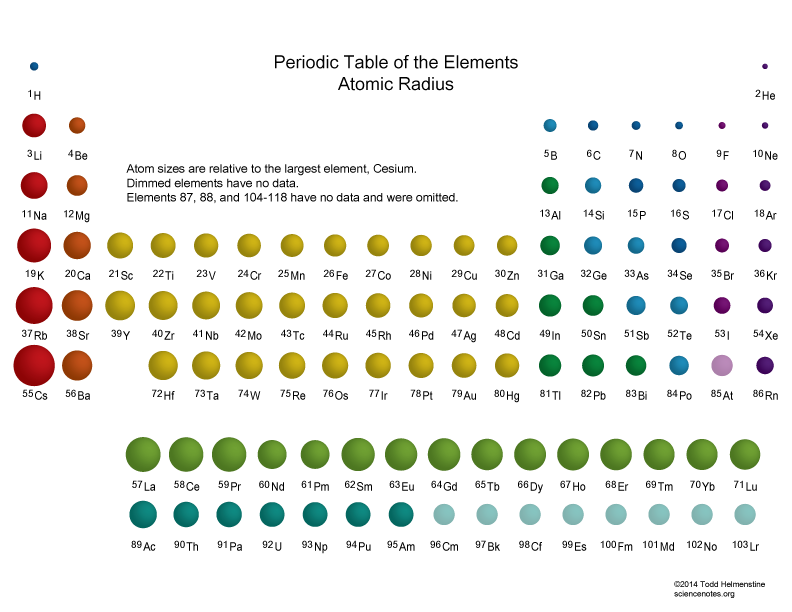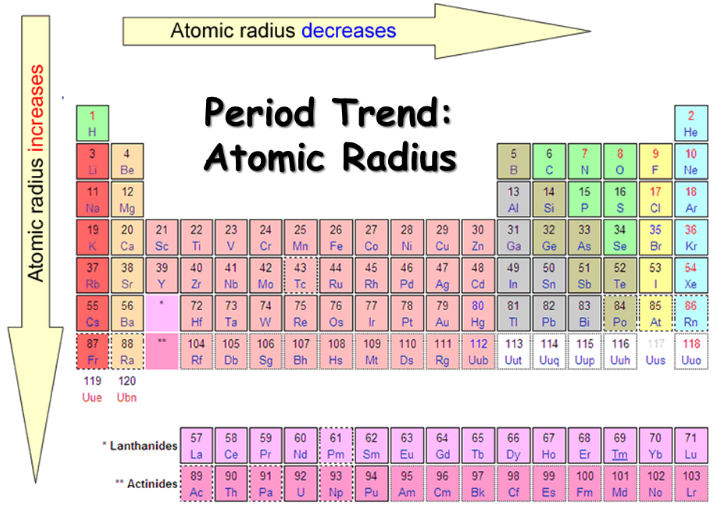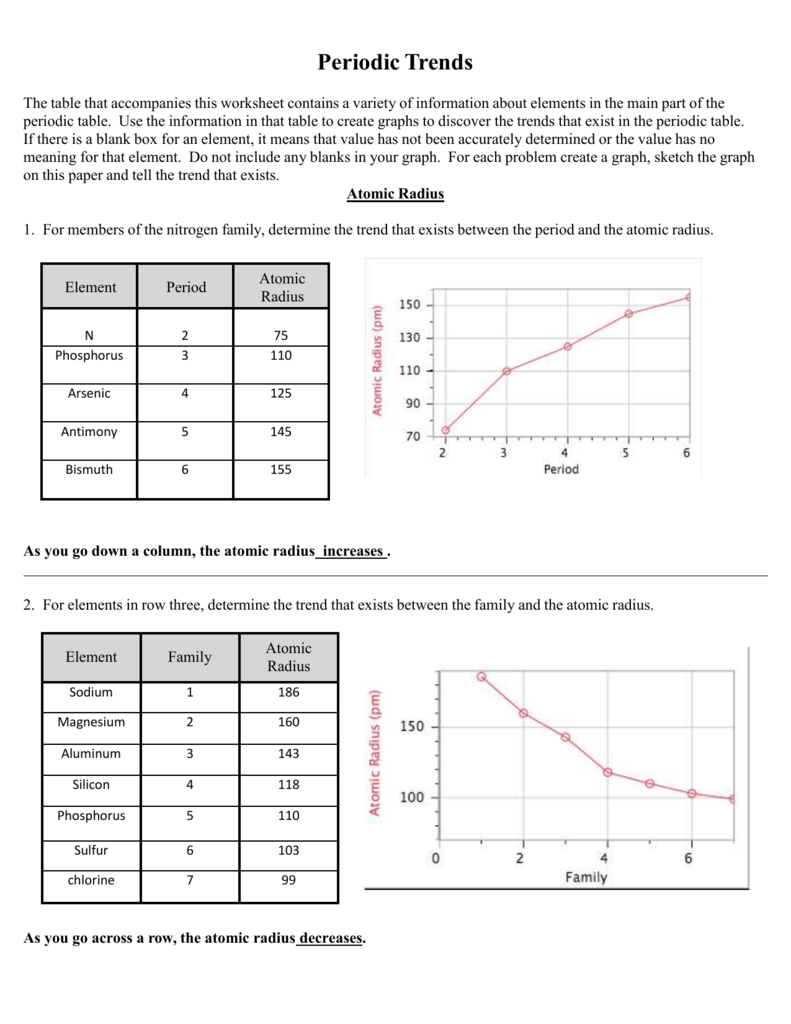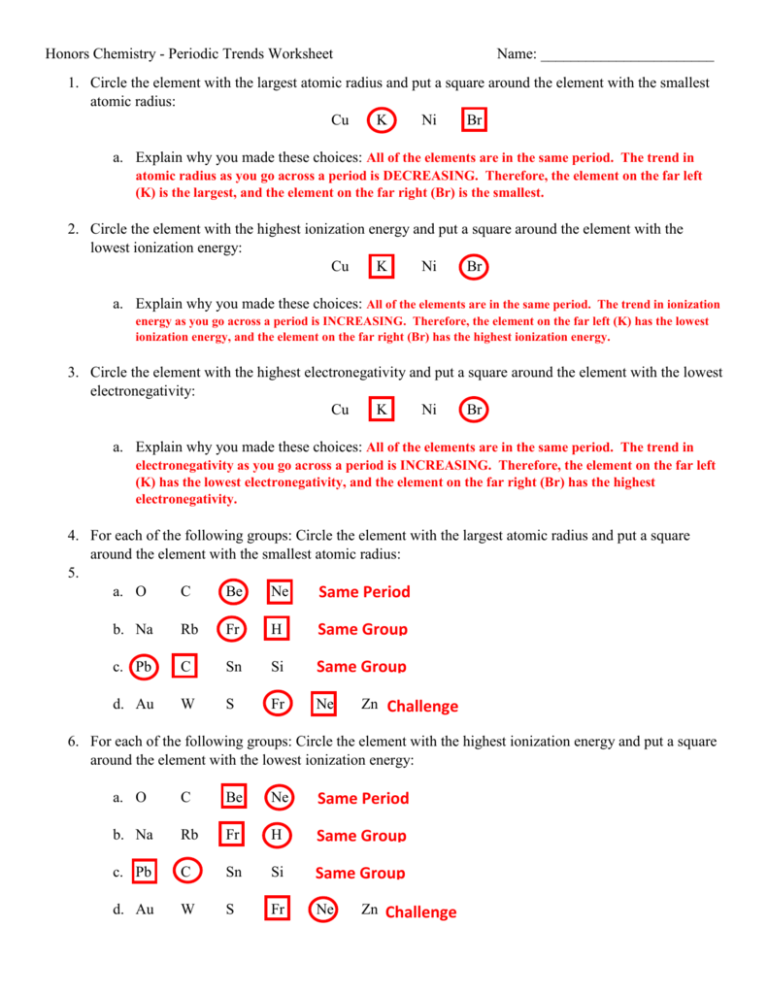Periodic Trends Atomic Radius Worksheet - We know the radius gets bigger as you go down a group, so the valence shell gets further from the attractive. Calcium, iron, neon, nitrogen, silicon 2) rank the following elements by increasing. Cu k ni br explain why. Circle the element with the largest atomic radius and put a square around the element with the smallest atomic radius: Describe specific reasons for this variation across a period and. Predict the variation in atomic radius in the periodic table. 1) rank the following elements by increasing atomic radius:
We know the radius gets bigger as you go down a group, so the valence shell gets further from the attractive. Cu k ni br explain why. Circle the element with the largest atomic radius and put a square around the element with the smallest atomic radius: Calcium, iron, neon, nitrogen, silicon 2) rank the following elements by increasing. Describe specific reasons for this variation across a period and. Predict the variation in atomic radius in the periodic table. 1) rank the following elements by increasing atomic radius:
Predict the variation in atomic radius in the periodic table. Describe specific reasons for this variation across a period and. We know the radius gets bigger as you go down a group, so the valence shell gets further from the attractive. Calcium, iron, neon, nitrogen, silicon 2) rank the following elements by increasing. 1) rank the following elements by increasing atomic radius: Circle the element with the largest atomic radius and put a square around the element with the smallest atomic radius: Cu k ni br explain why.
Solved Periodic Trends Worksheet TrendsAtomic Radii (size),
Calcium, iron, neon, nitrogen, silicon 2) rank the following elements by increasing. Describe specific reasons for this variation across a period and. Circle the element with the largest atomic radius and put a square around the element with the smallest atomic radius: Cu k ni br explain why. 1) rank the following elements by increasing atomic radius:
Atomic Radius Worksheet
Predict the variation in atomic radius in the periodic table. Circle the element with the largest atomic radius and put a square around the element with the smallest atomic radius: Calcium, iron, neon, nitrogen, silicon 2) rank the following elements by increasing. Describe specific reasons for this variation across a period and. We know the radius gets bigger as you.
Periodic Trends Worksheet Atomic Radius Which atom in each pair has
Circle the element with the largest atomic radius and put a square around the element with the smallest atomic radius: Cu k ni br explain why. We know the radius gets bigger as you go down a group, so the valence shell gets further from the attractive. Predict the variation in atomic radius in the periodic table. Describe specific reasons.
periodic trend for ionic radii Ionic radius sciencetrends
We know the radius gets bigger as you go down a group, so the valence shell gets further from the attractive. Cu k ni br explain why. Calcium, iron, neon, nitrogen, silicon 2) rank the following elements by increasing. Describe specific reasons for this variation across a period and. 1) rank the following elements by increasing atomic radius:
2 6 Periodic Trends Worksheet Answers Worksheets Joy
Describe specific reasons for this variation across a period and. Predict the variation in atomic radius in the periodic table. Cu k ni br explain why. Circle the element with the largest atomic radius and put a square around the element with the smallest atomic radius: We know the radius gets bigger as you go down a group, so the.
Solved Worksheet Part I Periodic Trends Atomic Radius The
Calcium, iron, neon, nitrogen, silicon 2) rank the following elements by increasing. Cu k ni br explain why. Describe specific reasons for this variation across a period and. We know the radius gets bigger as you go down a group, so the valence shell gets further from the attractive. Predict the variation in atomic radius in the periodic table.
Periodic Trends Worksheet Answers
1) rank the following elements by increasing atomic radius: Predict the variation in atomic radius in the periodic table. Calcium, iron, neon, nitrogen, silicon 2) rank the following elements by increasing. Circle the element with the largest atomic radius and put a square around the element with the smallest atomic radius: We know the radius gets bigger as you go.
Atomic Radius Worksheets
Predict the variation in atomic radius in the periodic table. We know the radius gets bigger as you go down a group, so the valence shell gets further from the attractive. 1) rank the following elements by increasing atomic radius: Cu k ni br explain why. Describe specific reasons for this variation across a period and.
Periodic Trends Atomic Radius Worksheet Answers
We know the radius gets bigger as you go down a group, so the valence shell gets further from the attractive. Calcium, iron, neon, nitrogen, silicon 2) rank the following elements by increasing. Cu k ni br explain why. 1) rank the following elements by increasing atomic radius: Predict the variation in atomic radius in the periodic table.
Periodic Trends Atomic Radius Worksheet Answers Printable Calendars
Predict the variation in atomic radius in the periodic table. Cu k ni br explain why. 1) rank the following elements by increasing atomic radius: Calcium, iron, neon, nitrogen, silicon 2) rank the following elements by increasing. Describe specific reasons for this variation across a period and.
Predict The Variation In Atomic Radius In The Periodic Table.
Circle the element with the largest atomic radius and put a square around the element with the smallest atomic radius: We know the radius gets bigger as you go down a group, so the valence shell gets further from the attractive. Describe specific reasons for this variation across a period and. Cu k ni br explain why.
1) Rank The Following Elements By Increasing Atomic Radius:
Calcium, iron, neon, nitrogen, silicon 2) rank the following elements by increasing.









